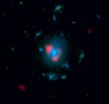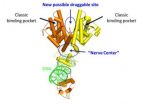Computer models predict how patients will respond to HIV drugs
Models could improve the treatment of HIV patients in countries with limited resources
2013-03-14
(Press-News.org) Results of a study published online in the Journal of Antimicrobial Chemotherapy today (Thursday), demonstrate that computer models can predict how HIV patients whose drug therapy is failing will respond to a new treatment. Crucially for patients in poorer countries, the models do not require the results of expensive drug resistance tests to make their predictions. The study also showed that the models were able to identify alternative drug combinations that were predicted to work in cases where the treatment used in the clinic had failed, suggesting that their use could avoid treatment failure.
When a patient's HIV drugs begin to fail in well-resourced countries a genotypic resistance test is performed to identify mutations that cause the virus to become resistant to certain drugs. The results are used to predict whether the patient will respond to different drugs in a new treatment. These tests are generally not available in resource-limited settings. Today's study shows that computer models can predict how such a patent will respond, with comparable accuracy, without the need for such tests.
"This is the first time this approach has been tried with real cases of treatment failure from resource-limited settings", commented Julio Montaner, former President of the International AIDS Society, Director of the BC Centre for Excellence in HIV & AIDS, based in Vancouver, Canada and an author on the paper. "The results show that using sophisticated computer based algorithms we can effectively put the experience of treating thousands of patients into the hands of the under-resourced physician with potentially huge benefits."
The models were developed by The HIV Resistance Response Database Initiative (RDI), using information gathered from many thousands of patients in hundreds of clinics around the world. They make their predictions of the probability of the drugs reducing the level of virus below a low limit from the patient's treatment history, the CD4 count(i) and the viral load. The models were most accurate (over 70%) when they were used to make predictions for new cases from the clinics that provided the data used in their training. However they were 60-64% accurate when tested with cases from southern Africa, 57% for India and 67% for Romania where resources are very limited. This compares favourably with accuracy of around 60-65% for genotyping, with interpretation using standard algorithms.
The models were also able to identify alternative, three-drug regimens, comprising locally available drugs that were predicted to produce a virological response for a substantial proportion of the treatment failures observed. This proportion ranged from 75% in Southern Africa, where the number of drugs available was highly restricted, to 93% in Romania and 99% in India. In all cases from the resource-limited countries, the models were able to identify regimens with a higher predicted probability of success than the regimen that failed.
"These results suggest that use of the system could help to avoid significant numbers of treatment failures", commented lead author Andrew Revell of the RDI. "The superiority of the models with cases from 'familiar' settings indicates that the full potential of this system to aid treatment decision-making could be realised by the collection of data from resource-limited settings and the use of these data to train the next generation of models."
The models are now available free of charge on the RDI web site at http://www.hivrdi.org.
It should be noted that, as the study was retrospective, no firm claims can be made for the clinical benefit that use of the system as a treatment support tool could provide. Nevertheless, the results were positive for clinics and cohorts in many different countries across five disparate regions of the world, which is very encouraging in terms of generalizability. The results also suggest that this approach has the potential to reduce virological failure and improve patient outcomes in less well-resourced countries.
### [i] CD4 (cluster of differentiation 4) is a glycoprotein found on the surface of immune cells such as T helper cells, monocytes, macrophages, and dendritic cells.
ELSE PRESS RELEASES FROM THIS DATE:
2013-03-14
Autism results from abnormal cell communication. Testing a new theory, researchers at the University of California, San Diego School of Medicine have used a newly discovered function of an old drug to restore cell communications in a mouse model of autism, reversing symptoms of the devastating disorder.
The findings are published in the March 13, 2013 issue of the journal PLOS ONE.
"Our (cell danger) theory suggests that autism happens because cells get stuck in a defensive metabolic mode and fail to talk to each other normally, which can interfere with brain development ...
2013-03-14
Some of the brightest galaxies in the universe – infant galaxies that churned out tens of thousands of stars each year at the dawn of the universe – evolved much sooner and in greater numbers than previously thought, according to new measurements obtained by University of Arizona astronomers.
The results are published in a set of papers to appear in the journal Nature on March 14 and in the Astrophysical Journal. The research is the most recent example of the discoveries coming from the new international ALMA observatory, which celebrates its inauguration today. ALMA, ...
2013-03-14
ORLANDO, Fla., March 13, 2013 – Researchers at Sanford-Burnham Medical Research Institute (Sanford-Burnham) have determined the complete three-dimensional structure of a protein called HNF-4α. HNF-4α controls gene expression in the liver and pancreas, switching genes on or off as needed. People with mature onset diabetes of the young (MODY1), a rare form of the disease, have inherited mutations in the HNF-4α protein. This first-ever look at HNF-4α's full structure, published March 13 in Nature, uncovers new information about how it functions. The study ...
2013-03-14
NEW YORK, MARCH 13, 2013 – Researchers have discovered a unique monoclonal antibody that can effectively reach inside a cancer cell, a key goal for these important anticancer agents, since most proteins that cause cancer or are associated with cancer are buried inside cancer cells. Scientists from Memorial Sloan-Kettering Cancer Center and Eureka Therapeutics have collaborated to create the new human monoclonal antibody, which targets a protein associated with many types of cancer and is of great interest to cancer researchers.
Unlike other human therapeutic monoclonal ...
2013-03-14
When a batch of bright cosmic objects first appeared in maps in 2008 made with data from the South Pole Telescope, astronomers at the University of Chicago's Kavli Institute for Cosmological Physics regarded it only as an unavoidable nuisance.
The light sources interfered with efforts to measure more precisely the cosmic microwave background—the afterglow of the big bang. But the astronomers soon realized that they had made a rare find in South Pole Telescope's large survey of the sky. The spectra of some of the bright objects, which is the rainbow of light they emit, ...
2013-03-14
In the southern Rift Valley of Kenya, the Maasai people, their livestock and a range of carnivores, including striped hyenas, spotted hyenas, lions and bat-eared foxes, are coexisting fairly happily according to a team of coupled human and natural systems researchers.
"I wouldn't call the results surprising," said Meredith Evans Wagner, a visiting scholar from the University of Florida in the Center for Systems Integration and Sustainability (CSIS) at Michigan State University and part of the research team. "Other research has shown that people and carnivores can coexist, ...
2013-03-14
PASADENA, Calif.—Galaxies have been experiencing vigorous bursts of star formation from much earlier in cosmic history than previously thought, according to new observations by a Caltech-led team.
These so-called starburst galaxies produce stars at a prodigious rate—creating the equivalent of a thousand new suns per year. Now the astronomers have found starbursts that were churning out stars when the universe was just a billion years old. Previously, astronomers didn't know whether galaxies could form stars at such high rates so early in time.
The discovery enables ...
2013-03-14
Colonoscopy is one of the most effective cancer screening procedures available. Colon cancer grows very slowly and can be treated if caught early through screening. But, perhaps because of this success, older Americans are undergoing screening colonoscopies despite recommendations against screening in adults aged 76 and older.
A new study by researchers at the University of Texas Medical Branch at Galveston published online today in JAMA Internal Medicine shows that one out of four colonoscopies paid for by Medicare is potentially inappropriate under current screening ...
2013-03-14
MADISON, Wis., March 13, 2013 – Even after researchers studying White Nose Syndrome (WNS) established that a fungus called Geomyces destructans is at the heart of the devastating disease, detecting it depended largely on finding dead or dying bats.
This month, the journal Mycologia will publish research by a team of U.S. Forest Service scientists and partners identifying additional species of Geomyces and describing development of a highly sensitive DNA-based technique for early identification of Geomyces destructans on bats as well as in soils and on cave walls.
"The ...
2013-03-14
CHAMPAIGN, Ill. — A little-noticed provision of the Affordable Care Act requires all chain restaurants and retail food establishments with 20 or more locations to list calorie counts on their menus. But according to research co-written by a University of Illinois agricultural economist, numeric calorie labels might not be the most effective way to influence patrons to select "healthier" (often interpreted as lower-calorie) items.
Brenna Ellison, a professor of agricultural and consumer economics, says placing a symbolic label in addition to the numeric calorie information ...
LAST 30 PRESS RELEASES:
[Press-News.org] Computer models predict how patients will respond to HIV drugs
Models could improve the treatment of HIV patients in countries with limited resources





